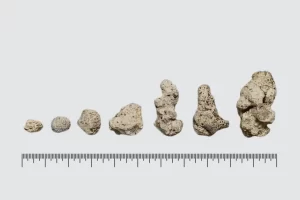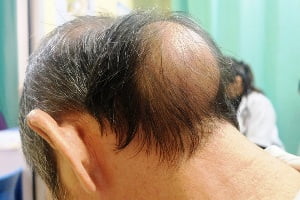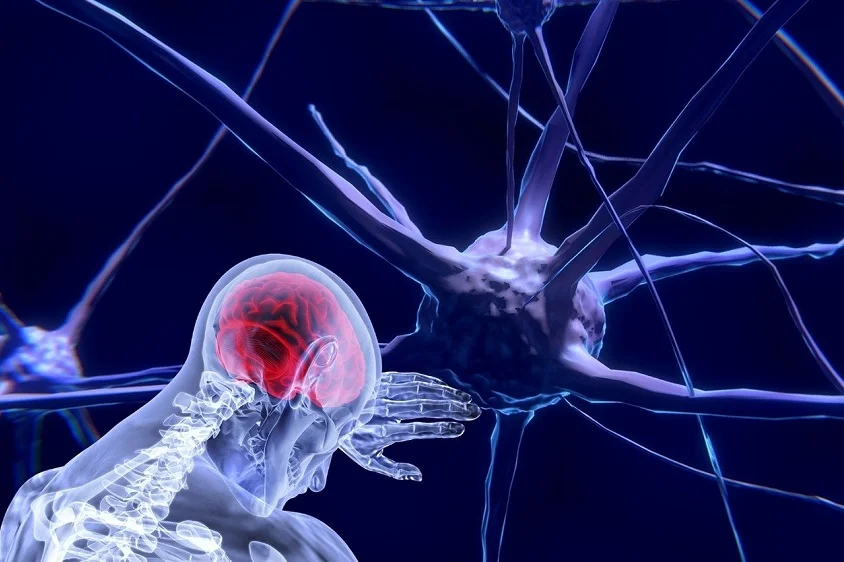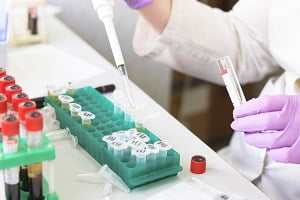The advancement of neurobiological research depends on specialized compounds that allow laboratories to probe neuronal function, survival, and recovery. Among these, 9-methyl-β-carboline (9-Me-BC) is a powerful agent that enables the in-depth study of dopaminergic neuron stimulation, protection, and regeneration—key aspects of neurological health and disease modeling. As interest in neurodegenerative and regenerative pathways grows, 9-Me-BC’s versatile properties make it a valuable addition to any neuroscience research pipeline.
Laboratories worldwide employ 9-Me-BC to dissect neurotrophic signaling, oxidative defense, and axonal plasticity in experimental settings. This guide compiles best practices, detailed experimental protocols, and reputable sources—including peer-reviewed literature and research tools—to support your laboratory’s work. All described uses are for laboratory research only and not for human or animal application.
1. Chemical and Analytical Profile of 9-Me-BC
Structural Characteristics and Laboratory Sourcing
- IUPAC Name: 9-methyl-9H-pyrido[3,4-b]indole
- Molecular Formula: C₁₂H₁₀N₂
- Molecular Weight:23 g/mol
- Physical Appearance: Pale yellow to beige crystalline powder
- Solubility: DMSO (excellent), ethanol (moderate), water (limited)
For reliable acquisition, see 9-Me-BC, a trusted source for high-purity, laboratory-grade compound. Ensure a valid certificate of analysis accompanies each lot.
Analytical Verification and Storage
- Quality Control: Validate each lot by HPLC (≥98% purity), NMR, and MS for structure and identity.
- Storage: Store at –20 °C in airtight, light-protected vials to prevent degradation.
- Documentation: Maintain detailed logs for batch number, storage dates, and all analytic data to support reproducibility.
2. Mechanisms of Dopaminergic Neuron Stimulation by 9-Me-BC
Cellular and Molecular Pathways
9-Me-BC has been shown to powerfully stimulate dopaminergic neuron growth and differentiation:
- Neurite Outgrowth Enhancement: The compound increases both the length and branching complexity of neurites in dopaminergic cell cultures, measured via automated image analysis of tyrosine hydroxylase (TH)-positive neurons.
- Dopaminergic Marker Expression: Elevates gene and protein levels of TH and dopamine transporter (DAT), reinforcing dopaminergic identity.
- Electrophysiological Effects: Emerging research suggests improved action potential firing and enhanced calcium signaling, indicating increased neuronal excitability and synaptic readiness.
Sample Extended Protocol
- Cell Preparation: Culture primary rat midbrain progenitors or iPSC-derived neural precursors in differentiation media.
- Treatment: Administer 9-Me-BC at 1–10 μM for 7–14 days, with regular media changes.
- Assessment:
- Perform immunofluorescence for TH and DAT.
- Use qPCR for marker gene expression.
- Assess morphological complexity using Sholl analysis and total neurite outgrowth.
- Optionally, use patch-clamp or calcium imaging to measure neuronal activity.
Expanding Experimental Value
For multiplex studies, consider including additional β-carbolines or Nootropic reference standards. For broader context on such compounds, consult the Nootropics research collection.
3. Neuroprotection and Regenerative Potential
Antioxidant and Mitochondrial Mechanisms
9-Me-BC offers robust neuroprotection via several pathways:
- Antioxidant Enzyme Induction: Increases levels of SOD, catalase, and GPx, lowering intracellular ROS and enhancing resistance to oxidative insult.
- Mitochondrial Support: Stabilizes membrane potential, optimizes ATP production, and prevents mitochondrial fragmentation—a hallmark of cellular stress.
- Apoptosis Inhibition: Suppresses pro-apoptotic proteins (e.g., caspase-3, BAX) and supports pro-survival factors (Bcl-2), promoting cell viability under toxic challenge.
Regeneration and Plasticity
- BDNF and GDNF Upregulation: 9-Me-BC induces neurotrophic factor expression, critical for neuron survival, axon guidance, and synaptic repair.
- Synaptic Formation: The compound increases levels of synaptic markers (synaptophysin, PSD-95), supporting new synapse formation and circuit connectivity.
- Axonal Regrowth: Post-injury models show 9-Me-BC promotes axonal elongation and re-establishment of neural networks.
See the comprehensive review, 9-Me-BC Neuroprotection & Regeneration, for in-depth protocol recommendations and mechanistic details.
Example Research Expansion
- Injury Modeling: Apply oxidative (e.g., H₂O₂) or toxin (6-OHDA) challenge to dopaminergic cultures.
- Therapeutic Window: Add 9-Me-BC (5–10 μM) post-injury and monitor for 1–2 weeks.
- Evaluation:
- Immunostaining for survival and regeneration markers.
- ROS quantification and mitochondrial health (MitoTracker, ATP assays).
- Sholl analysis for axon regrowth and network restoration.
- Western blot/ELISA for synaptic and neurotrophic protein levels.
Multiparametric Assays, Controls, and Data Analysis
Experimental Design and Rigor
- Control Groups: Always use vehicle, negative, and positive (reference neuroprotectant) controls for baseline and benchmarking.
- Replicates: Conduct a minimum of three independent biological replicates, with technical triplicates for each endpoint.
- Multiplexing: Integrate viability assays (MTT/XTT), morphological metrics (neurite tracing), apoptosis markers, and functional readouts for comprehensive datasets.
Advanced Analytics
- Data Integration: Use advanced statistical methods (ANOVA with post hoc tests, correction for multiple comparisons).
- Big Data Approaches: Employ automated imaging systems and machine learning-based morphometric analysis to handle high-content datasets.
- Meta-Analysis: Compare your findings with broader published research. For conceptual background and classification, see the Nootropics resource.
Laboratory Safety, Handling, and Compliance
Enhanced Safety Protocols
- PPE: Gloves, lab coat, goggles at all times; handle powders in ventilated enclosures.
- Solution Handling: Prepare stock in DMSO, store aliquots to minimize freeze-thaw cycles, and avoid cross-contamination.
- Waste Management: Strictly follow hazardous waste protocols—never dispose of solutions via sinks or general trash.
- Documentation: Maintain comprehensive logs for all compound preparation, handling, and disposal.
Compliance and Ongoing Education
Stay informed on laboratory regulations and safety standards. Platforms such as DiseaseFix offer valuable resources for compliance, safety updates, and troubleshooting experimental issues.
Expanding the Research Landscape
Omics, High-Throughput, and Translational Insights
- Omics Profiling: Incorporate transcriptomics, proteomics, and metabolomics to explore global changes induced by 9-Me-BC in dopaminergic neurons.
- Comparative β-Carboline Studies: Map out structure–activity relationships by testing 9-Me-BC alongside other synthetic and natural analogs.
- Automated Discovery: Use high-content imaging and screening platforms to quickly assess neuroprotective and regenerative potential across compound libraries.
Collaboration and Knowledge Exchange
- Research Networks: Share findings, protocol optimizations, and troubleshooting tips with interdisciplinary collaborators.
- Lab Management Tools: Utilize digital management and knowledge-sharing platforms to streamline multi-user projects and cross-institutional studies.
Additional Resources and Future Directions
- Protocol Repositories: Publish and access detailed experimental protocols in open-access repositories to advance the field collectively.
- Funding and Grant Collaboration: Seek interdisciplinary grants and partnerships for larger, more impactful studies on dopaminergic regeneration and neuroprotection.
- Emerging Models: Expand into organoid, microfluidic, and co-culture systems to model dopaminergic networks in increasingly realistic environments.
Conclusion
9-methyl-β-carboline (9-Me-BC) remains at the forefront of neuropharmacological research into dopaminergic neuron health. Its ability to promote neurite outgrowth, mitigate oxidative and apoptotic stress, and drive regeneration makes it indispensable for laboratory-based modeling of neurodegeneration, plasticity, and repair. Through strict adherence to experimental best practices, analytical rigor, and cross-disciplinary collaboration, the potential for meaningful discovery continues to grow.







